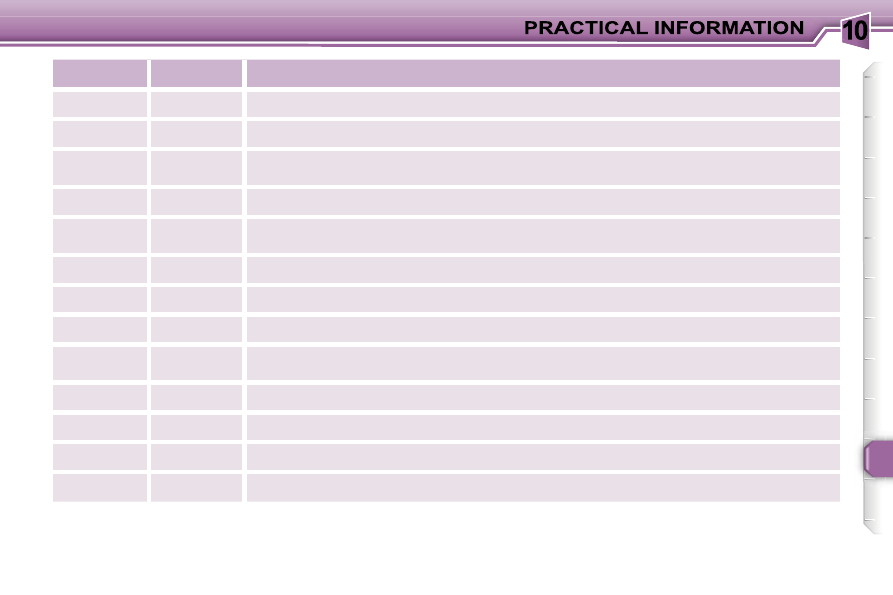Peugeot 307 Break Dag (2007 year). Manual - part 10

10
127
Fuse N°
Rating
Functions
F6
30 A
Rear electric windows.
F7
5 A
Front and rear courtesy lights, map reading lights, glove box lighting
.
F8
20 A
Audio equipment, audio/telephone, multifunction display, alarm siren, alarm unit,
trailer fuse box, driving school module, steering wheel stalks supply.
F9
30 A
12 V front socket, 12 V rear socket.
F10
15 A
Automatic gearbox control unit, tyre under-inflation detection control unit, STOP switch.
F11
15 A
Diagnostic socket, particle emission filter unit, low current ignition switch.
F12
15 A
Driving school module, rear parking assistance.
F13
5 A
Engine fuse box, rain and brightness sensor.
F14
15 A
Trailer fuse box, instrument panel, air bags and pre-tensioners unit,
automatic air conditioning, hands-free kit.
F15
30 A
Locking and deadlocking.
F16
-
PARC shunt.
F17
40 A
Heated rear screen.
F39
20 A
Driver and passenger heated seats.